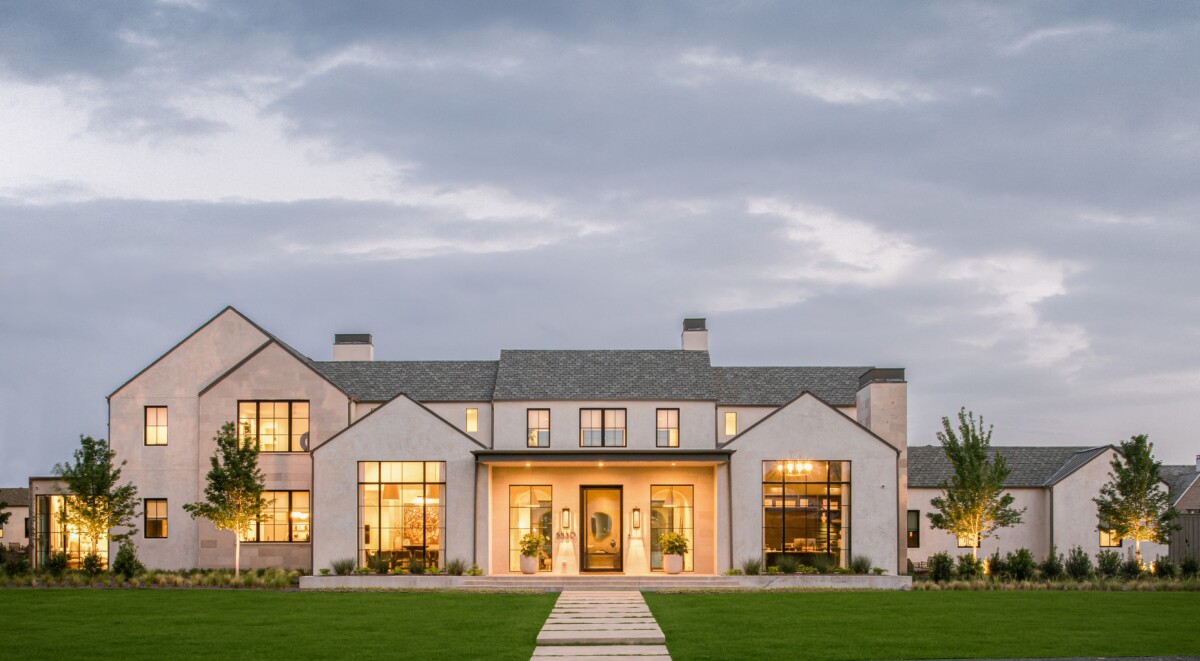
Navigating New Construction Landscaping
The Benefits of Beginning Landscape Design During New Home Construction
Beginning the landscape design process while building a new home offers a blank canvas and numerous benefits. From aesthetic synchronicity and material acquisition ease to a move-in-ready outdoor space, designing the landscape early in the building process is advantageous to both the homeowner and the designer. Go behind the scenes with us as Bonick landscape designer, Todd Piasczyk navigates us through his recent contemporary new construction landscaping project.
At Bonick, we strongly believe in building continued relationships, so it was rewarding to learn our client was referred by a close relative who had used Bonick Landscaping many years ago. This busy, young family wanted charming curb appeal with a low-maintenance planting palette and a large backyard living space. The goal was to create a private, flexible area that provided plenty of pool time and play for their little ones while affording ample area for entertaining friends and family.
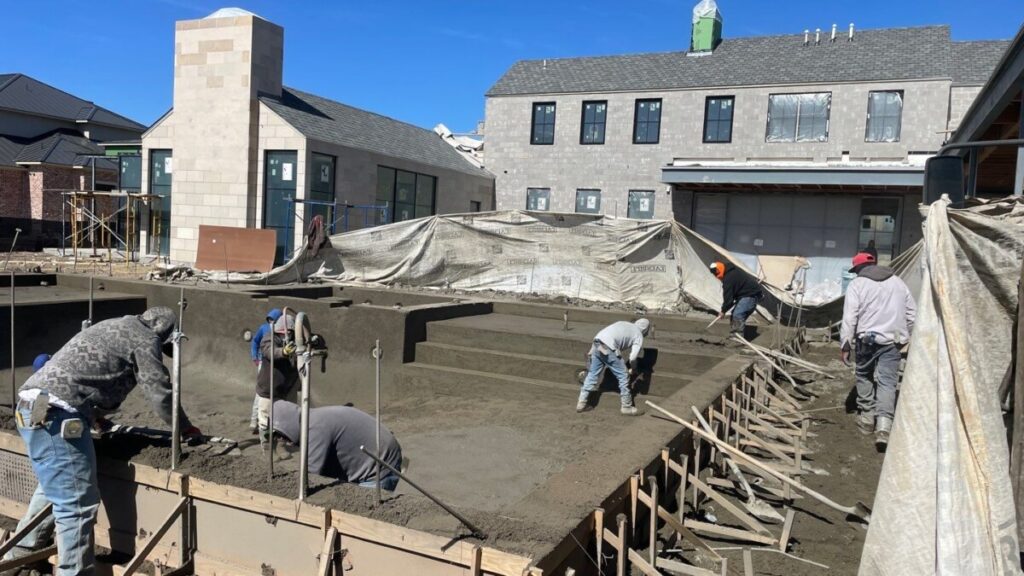
Perks of New Construction Landscaping
While construction had already commenced, and the home’s building plan was already set in stone, designer Todd Piasczyk communicated with the client to create the landscape plan, collaborating with fellow Bonick landscape designer, Jose Perez. They worked in tandem with Rosewood Custom Homes to create a seamless aesthetic for this exquisite outdoor entertaining space. Since the client had already selected the materials for the home, it was easy to build and acquire the corresponding outdoor palette to mirror the home’s architectural style.
This approach is one major advantage of new construction landscaping since it yielded consistency and balance to the overall look and feel of the property. For instance, we echoed the buff leudar limestone from the house in the pool coping and edges of the water feature. Of course, we also added a few twists. One was using acid-etched concrete for retaining walls, raised garden beds, and walkways. This method removes the creme to give it a clean modeled surface with no visible imperfections, resulting in museum quality without the price of stone.
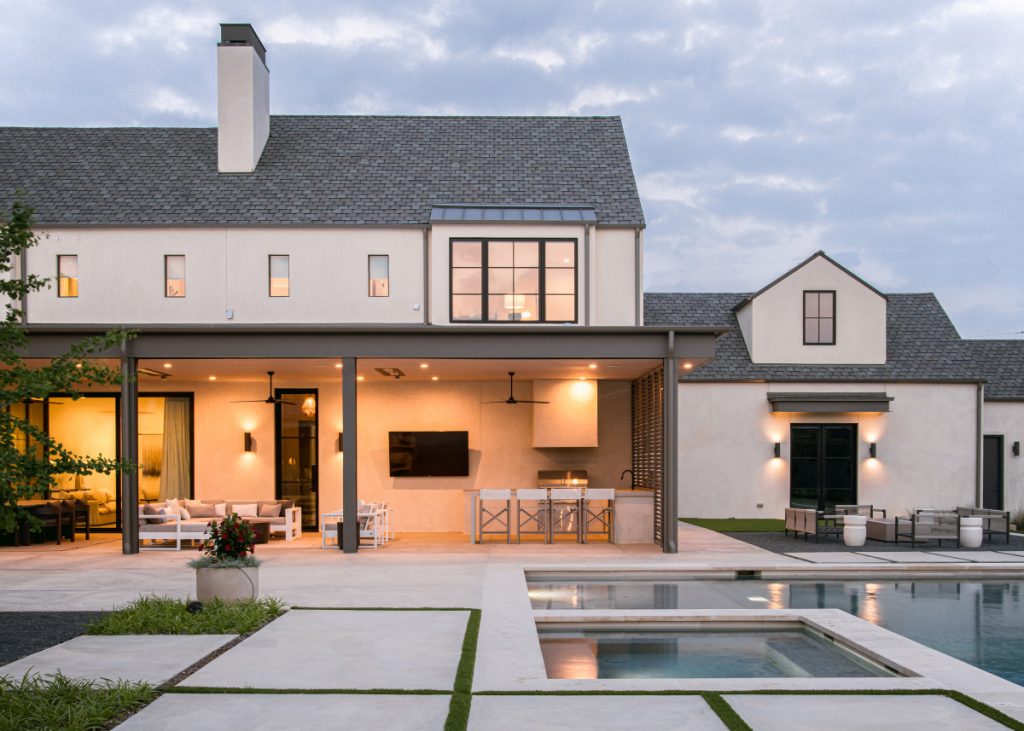
This home’s entertaining space was crucial, featuring several covered and uncovered seating areas, outdoor television, and an outdoor kitchen and bar.
“Todd Piasczyk was a pleasure to work with. He was available, communicative, knowledgeable, and patient; all important qualities when working through a large complicated project!” – Chris Dauwe, Rosewood Custom Homes
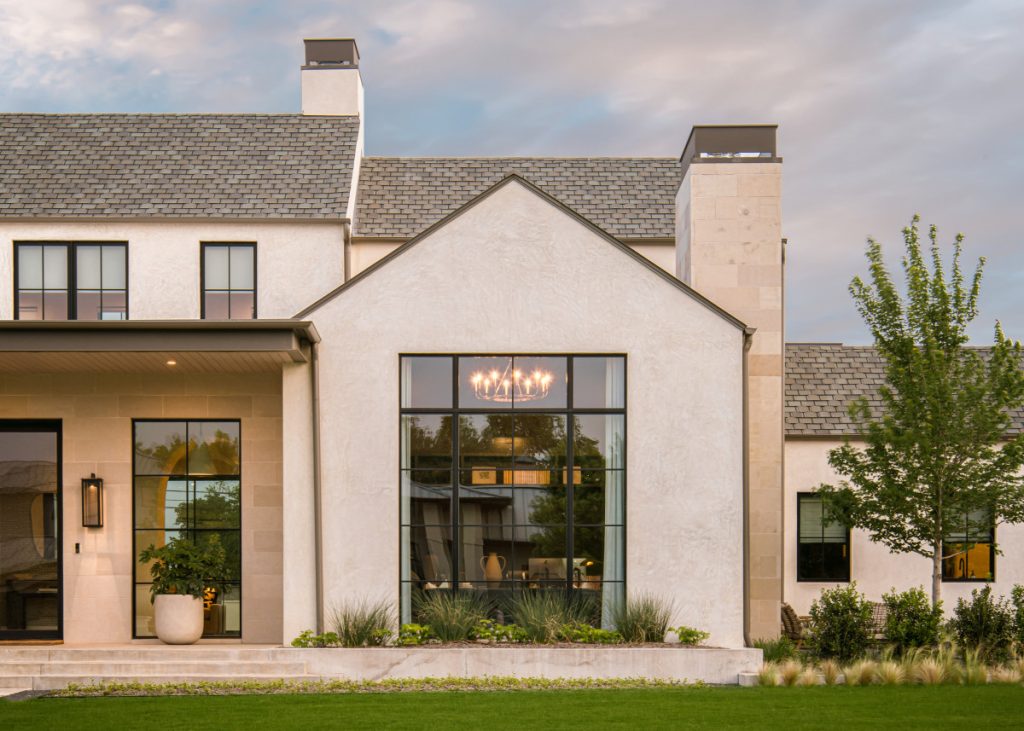
Another benefit of new construction landscaping is that the plants have time to mature while the home is being built, allowing for a stunning outdoor living space by the time the owner moves in.
For this particular landscape, we implemented live oaks and hollies for screening and character, and large magnolias for backyard privacy. Other low-maintenance plantings included Mexican feather grass, grey cotoneaster, yewtopia plum yews, eleaganus, liriope, and Asian jasmine for groundcovers. We also incorporated potted plants for focal points.
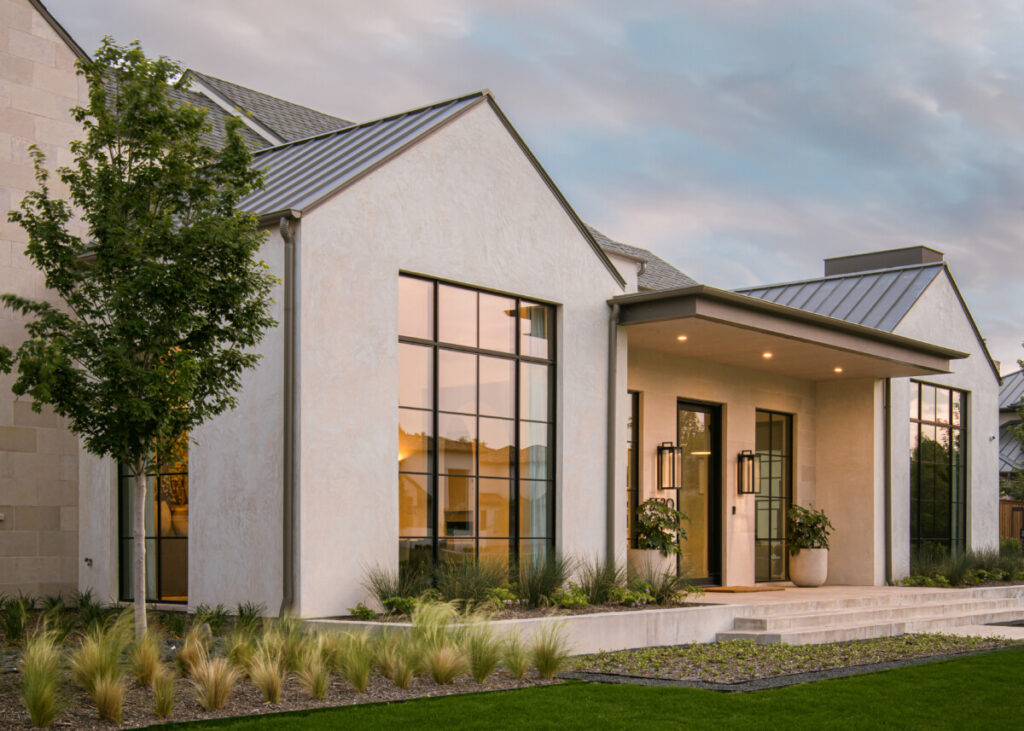
Pivoting: An Essential Tool of Design
While beginning a landscape design during the home building phase has its perks, there can also be some challenges requiring the landscape designer to adapt. One obstacle in new construction landscaping often involves budgets; if some of the client’s choices turn out to be more costly, the landscape budget usually falls in last place, causing a reduction in the scope of work. It’s also common for a client to make indoor changes that can affect the landscape design. As a designer and implementor, it’s crucial to be able to pivot.
As Todd reiterated, “You just need to be patient and understanding, make sure you gather all the information that has been executed, and then talk with the production team to ensure that everyone is on the same page and understands why the changes are being implemented.”
Creating alternate designs when challenges arise helps to relay the information to the client. These designs convey a visual so they understand how this challenge may affect the design and budgets, allowing them to make an informed decision and sign off on the best solution.
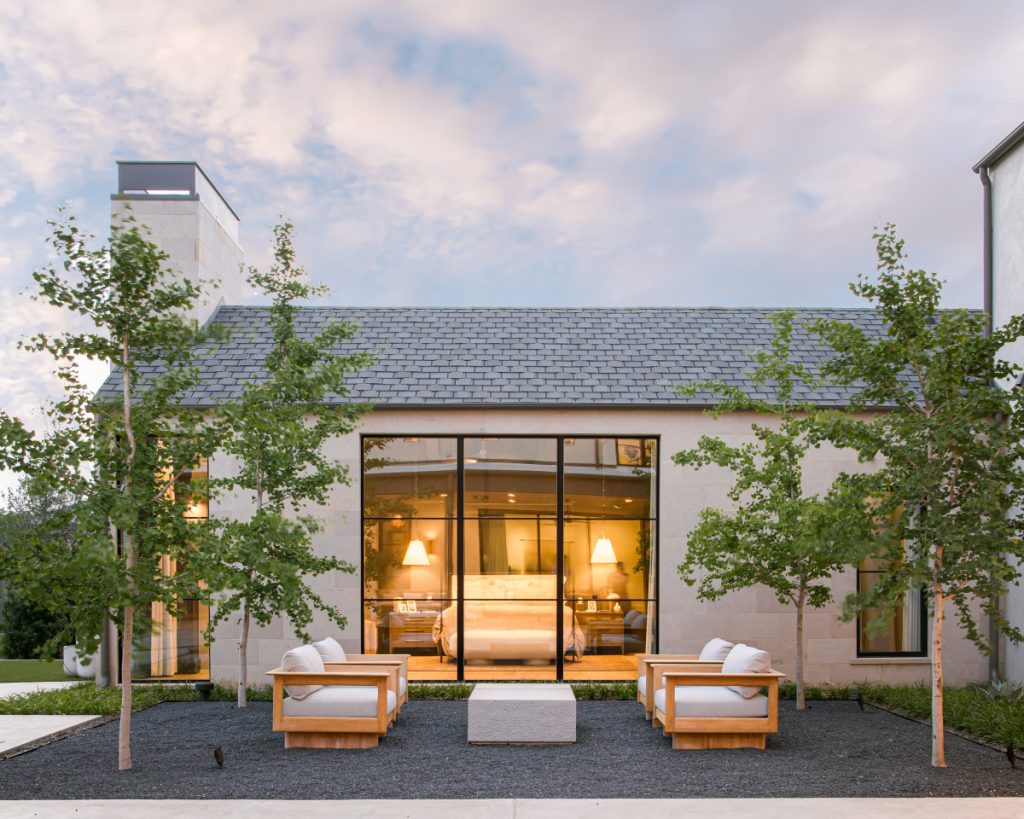
For contrast, we added large basalt gravel in a few areas, such as this meditation garden.
Specifically, this Preston Hollow contemporary home presented itself with a particularly perplexing predicament involving the slope of the driveway, but our designers were up for the challenge. The client owned some very high-end cars that rode low to the ground, so it took several hours of research to get the clearance correct so the cars did not bottom out.
Todd went the extra mile to ensure success and relay all of the details to the contractors.
“I literally had to go to the car dealership and get on the ground to measure several spots on the car to make sure I got the information I could not find on the internet.”
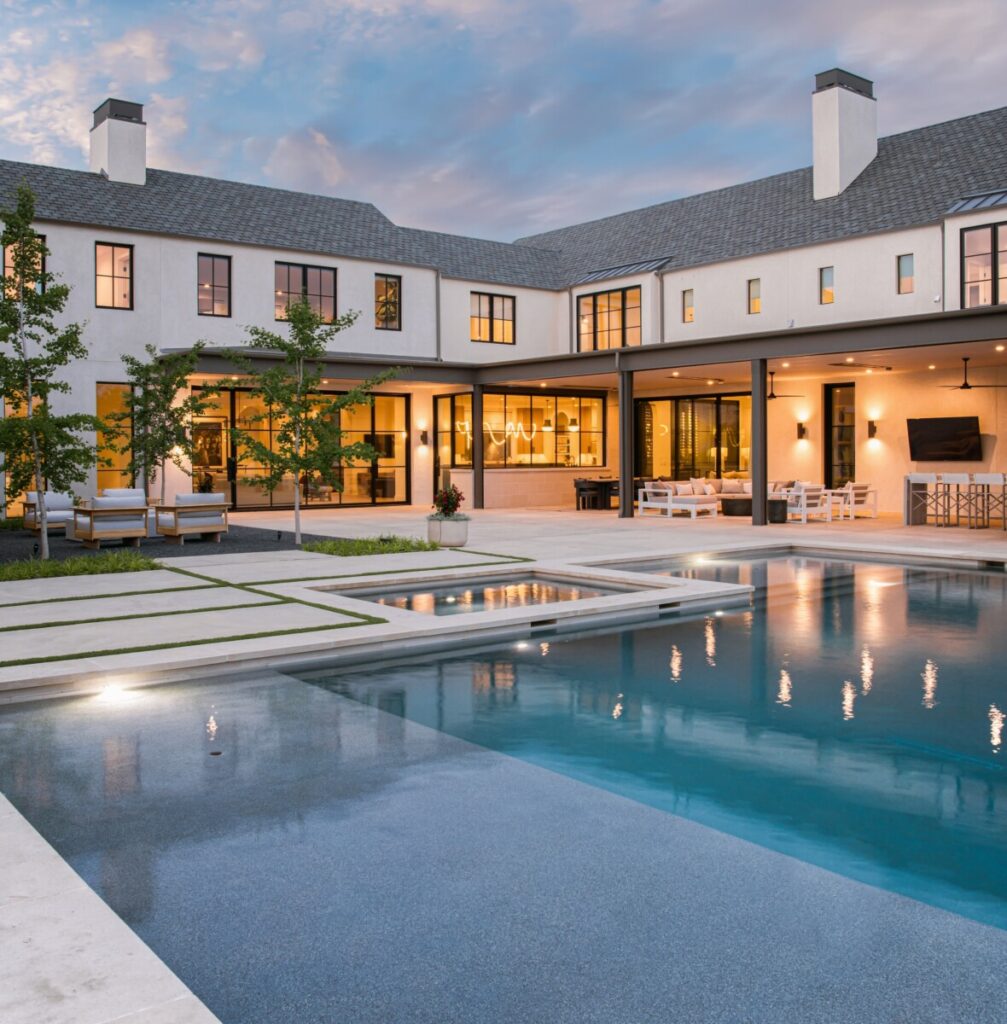
Final Thoughts on This New Construction Landscaping Project
Todd credits the success of this project to the Bonick team. This extensive project took several years to build and required numerous revisions. From losing trees during the heat of summer to adjustments in the scope of work and the production schedule, our production staff deserves tremendous kudos for staying on top of this project without cutting corners. At Bonick, we stand behind our product to ensure it is done correctly. Despite the inevitable detours and details modifications, in the end, the client was very pleased with the final result.
If you’re considering building a new home, or if you’re a builder or architect in need of a landscape design bid, contact us to discuss your project. At Bonick, we love collaborating with you to ensure seamless communication and cohesive design.
You May Also Enjoy:
Elevated Execution: Collaboration with Dallas Architects
Linear Perspectives: An Inside Look at Our Landscape Architects & Designers
Function & Flow: The Importance of Landscape Concept Plans